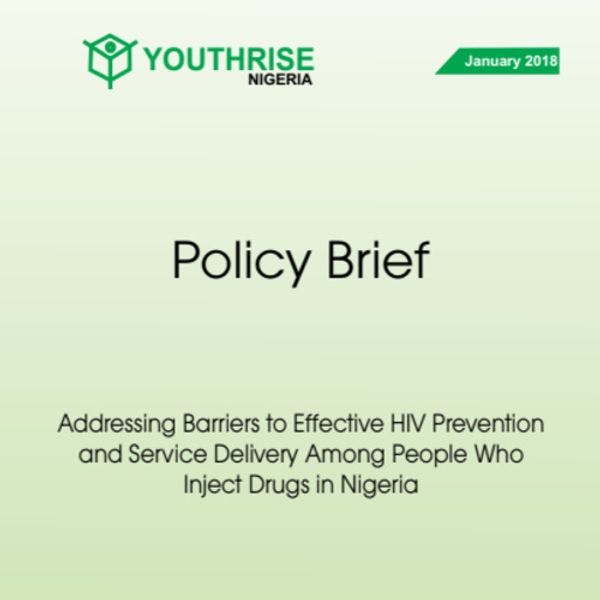Obstáculos a la prevención eficaz del VIH y la prestación de servicios entre las personas que se inyectan drogas en Nigeria
Youth RISE Nigeria plantea algunos de los problemas que entraña la recopilación de datos en el país y exige compromisos más sólidos para implantar de manera efectiva los servicios de reducción de daños y prevención del VIH en un entorno propicio. Más información, en inglés, está disponible abajo.
The use of drugs is not new to Nigeria, but in recent years, the country has moved from being a transit nation to a producing nation ranking as one of the largest producers of cannabis in 2 Africa and with the highest rates of drug trafficking and drug use in West Africa . In spite of this, data on the estimated number of illicit drug use in Nigeria is limited. The available data is fragmented, with one having to rely upon individual or institution research studies which tend to focus on certain drugs, population or region.
According to National Agency For Food and Drug Administration and Control (NAFDAC) , the most commonly abused drugs in Nigeria are stimulants, hallucinogens, narcotics, sedatives and tranquilizers. In National Epidemiological Network on Drug Use (NENDU) analysis of drug treatment information in Nigeria, cannabis was declared thAe most frequently used (36.2%) followed by opiates (28.3%) and alcohol (17.1%). The most common opiates were tramadol -71%, codeine - 15.1%, pentazocine - 9.9% and heroin and morphine representing 3.3% of the opiates declared . increase in use of injecting drugs in the country, there is a heightened risk of HIV and other blood born viruses though the sharing of needles and syringes, low risk perception and non-availability of sterile equipment at the time of use .
Injecting drugs with a contaminated needle directly into vein is actually a much more efficient way of transmitting HIV than through unprotected sexual intercourse. According to the 2014 Integrated Biobehavioral Surveillance Survey (IBBSS), the HIV prevalence among people who inject drugs is 3.4% . The HIV prevalence however varies from state to state with Kano state as high as 7% and Cross River and FCT, just over 5%. Although concerns have been raised at the community level that the national data is not a true reflection of the HIV situation among people who inject drugs which is considered to be higher. Female injecting drug users also have a higher prevalence rate than their male counterparts - seven times higher . This is consistent with data globally which states that women who inject drugs face a broad range of gender-related health risks and are less likely to access healthcare services.
